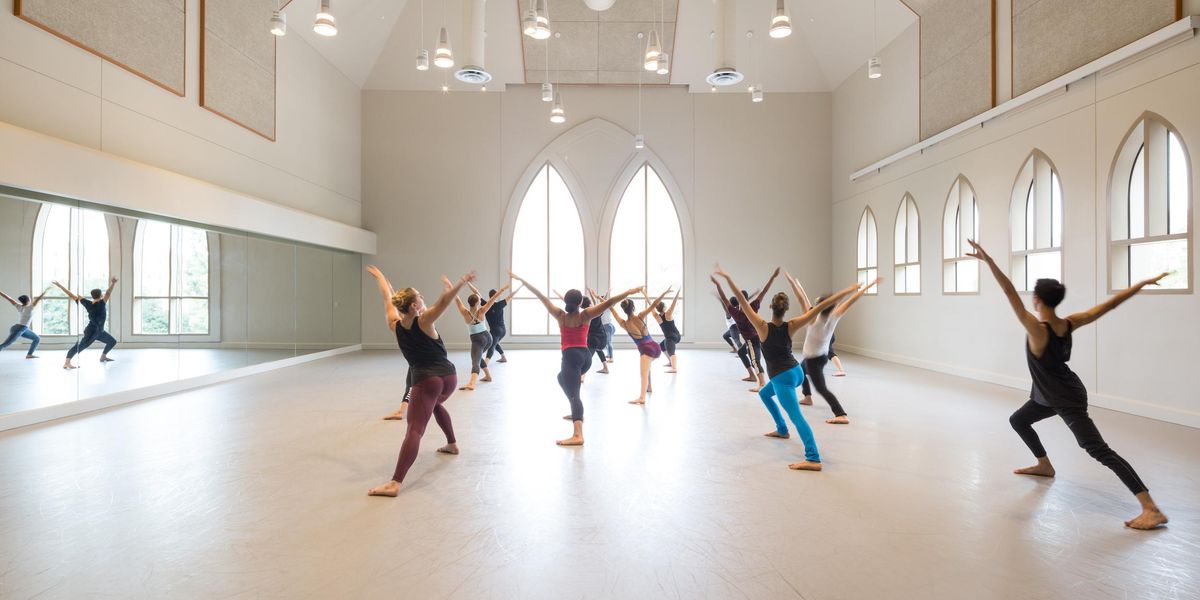Nederlands Dans Theater
Presented by the Joyce Theater at the Koch Theater
New York City, NY
Performance reviewed: April 12, 2013
Nederlands Dans Theater, back in New York after nearly a decade, showed a substantial departure in artistic direction. The esteemed troupe, presented by the Joyce at the Koch Theater, featured two works by resident choreographers Paul Lightfoot (artistic director) and Sol Léon. But while the dancers have retained the sinewy lines and high polish of previous viewings, the choreography speaks a language that fails to convey much substance, although both productions (also designed by Lightfoot and Léon) make impressive use of the large theater.
In many of its essential shapes, Lightfoot and Leon’s choreography resembles that of longtime artistic director Jirí Kylián’s, but a tendency to indulge tics and reflexive impulses becomes perplexing. Extended legs, usually slightly bent, are held up with the help of hands; barrel leaps are frequent staples. Phrases are built of choppy exclamations rather than flowing prose. When they are given a continuous phrase with some balletic moves, it’s a great relief.
Sehnsucht
(desire or longing) centers around a love triangle. The third wheel, a lithe Silas Henriksen, solemnly watches Parvaneh Scharafali and Medhi Walerski inhabiting a cozy room—a floating niche—that rotates clockwise, usually in 90-degree increments. But just as a longtime couple must adjust to unexpected circumstances, the pair braces for the rotations by cleverly shifting their weight or hanging on. In a second section, 15 topless dancers (including several women) in black pants form a chorus that performs grand ensemble phrases to Beethoven’s even grander Symphony No. 5, illustrating musical flourishes with twitches and hand gestures.
Parvaneh Scharafali in Lightfoot/León’s
Sehnsucht. Photo by Rahi Rezvani, Courtesy NDT.
The trio and the spinning box return for the final movement. Scharafali climbs out the window and Walerski departs conventionally, leaving Henriksen as he began, squatting like a frog in front of the curtain. Interestingly (or not), he remains there as the curtain is raised two feet and we see the crew’s feet as they change the set. Henriksen rises and very slowly exits, eliciting cheers—sarcastic and sincere—from the audience. A woman in a red coat, and then another man in grey pants, take turns distracting us by moving slowly on the apron as the very long interval winds down.
Schmetterling
(butterfly) is ambitious and a bit of an odd duck, broaching big ideas about eternal love and afterlife while using the ironic, folksy love songs of The Magnetic Fields and ambient music by Max Richter. It begins with a couple; Ema Yuasa is made up to look older than Medhi Walerski as she hunches over, cracking smiles at nostalgic memories, while he is constant in his ardor and bare-chested athleticism. The dancers emerge from doorways nested in a black wall, and odd characters in unisex black dresses dart across the opening, performing humorous segments. In one, the dancers stomp downstage, supermodel style, form a line, voguing and forcing fake smiles, then descend into the audience and exit through the house.
In stages throughout, the smallest central portal opens, revealing a moody skyscape, and one by one, the nested portals disappear to show a breathtaking panorama of Death Valley. (Symbolism is not light here.) Toward the end, the photographic curtain is pulled to the side to show a black void. We aren’t sure if the afterlife leads to an elysium that turns out to be hell-on-Earth, or merely nothing. But for all the dramatic flourishes, the choreography falls short as a vehicle through which to tell such ambitious stories, instead becoming a collection of oddball moves and repetitious go-to ballet moves; the sets do all the heavy work.
Pictured at top:
Parvaneh Scharafali with Medhi Walerski in Lightfoot/León’s
Sehnsucht.
Photo by Rahi Rezvani, Courtesy NDT.




